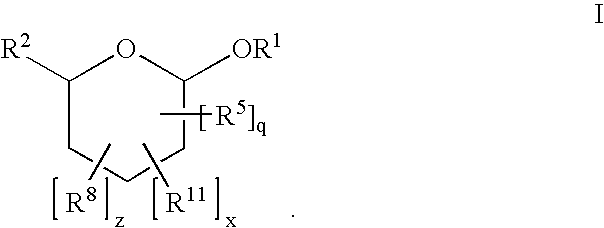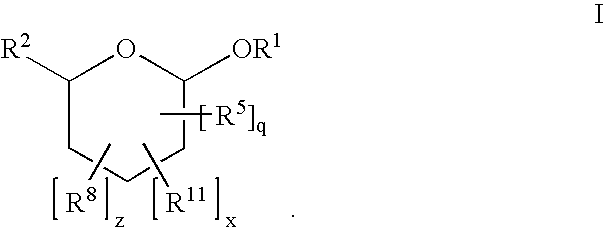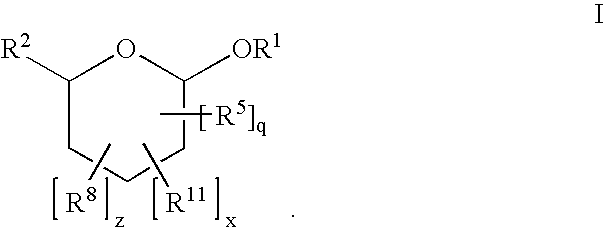Methods of inhibiting the adherence of lenses to their packaging
- Summary
- Abstract
- Description
- Claims
- Application Information
AI Technical Summary
Problems solved by technology
Method used
Image
Examples
example 1
Solution A with a Variety of Surfactants
Lenses were added to individual polypropylene blister packs containing 950 μL of Solution A, and then the blister pack was heat sealed. Lenses were visually evaluated for lens' adhesion to the package, both prior to and after one autoclave cycle of 30 minutes±5 minutes at 121° C.±5° C. and subsequent cooling to room temperature. Different amounts of surfactants were added to Solution A and lenses were evaluated before and after an autoclave cycle to determine the degree of adhesion to a package. Solution B and Solution C (without any added surfactants) were evaluated as well. The data is presented below in Table 1 and Table 2
TABLE 1Solution A (except asnoted)Solutions / ConcentrationAutoclaved(ppm)Lenses DLenses ALenses GLenses HLenses ENo SurfactantStickStickStickStickStickPVP (2,500)50StickStickStickN / AMild Sticking100StickStickStickN / AStick250StickStickStickStickStickPVP (10,000)50StickStickStickN / AStick100StickStickStickN / AStick250StickStic...
example 2
Solution A with a Variety of Surfactants
Lenses were added to individual polypropylene blister packs and subsequently 950 μL of Solution A, was added to the blister packs. The filled packs were heat sealed. Lenses were visually evaluated for lens' adhesion to the package, both prior to and after one autoclave cycle of 30 minutes±5 minutes at 121° C.±5° C. and subsequent cooling to room temperature. Different amounts of surfactants were added to Solution A and lenses were evaluated before and after an autoclave cycle to determine the degree of adhesion to a package. Solution B and Solution C (without any added surfactants) were evaluated as well. The data is presented below in Table 3 and Table 4.
TABLE 3Lens FirstSolutions / ConcentrationAutoclaved(ppm)Lenses DLenses ALenses GLenses HLenses ENo SurfactantStickStickStickStickStickPVP (2,500)50StickStickStickN / AStick100StickStickStickN / AStick250StickStickStickStickStickPVP (10,000)50StickStickStickN / AStick100StickStickStickN / AStick250Sti...
example 3
Solution A with a Variety of Surfactants
Lenses were added to individual polypropylene blister packs containing 1.0 mL of Solution A, was added to the blister packs. The filled packs were heat sealed. Lenses were visually evaluated for lens' adhesion to the package, both prior to and after one autoclave cycle of 30 minutes±5 minutes at 121° C.±5° C. and subsequent cooling to room temperature. Different amounts of surfactants were added to Solution A and lenses were evaluated before and after an autoclave cycle to determine the degree of adhesion to a package. The results were the same before and after autoclave and the data is presented below in Table 5.
TABLE 5Solution / concentrationTotal #Lensesppmlenses1234Lenses CNo Surfactant66Lenses CPVP 360,000 / 100066Lenses CPEO 5,000,000 / 100066Lenses CDOE-120 / 100066Lenses DNo surfactant55Lenses DDOE-120 / 50055Lenses DDOE-120 / 250532Lenses DDOE-120 / 1005321 = completely free floating with no adhesion when package is rotated. 2 = may not initially b...
PUM
| Property | Measurement | Unit |
|---|---|---|
| Percent by mass | aaaaa | aaaaa |
| Percent by mass | aaaaa | aaaaa |
| Percent by mass | aaaaa | aaaaa |
Abstract
Description
Claims
Application Information
 Login to View More
Login to View More - R&D
- Intellectual Property
- Life Sciences
- Materials
- Tech Scout
- Unparalleled Data Quality
- Higher Quality Content
- 60% Fewer Hallucinations
Browse by: Latest US Patents, China's latest patents, Technical Efficacy Thesaurus, Application Domain, Technology Topic, Popular Technical Reports.
© 2025 PatSnap. All rights reserved.Legal|Privacy policy|Modern Slavery Act Transparency Statement|Sitemap|About US| Contact US: help@patsnap.com



